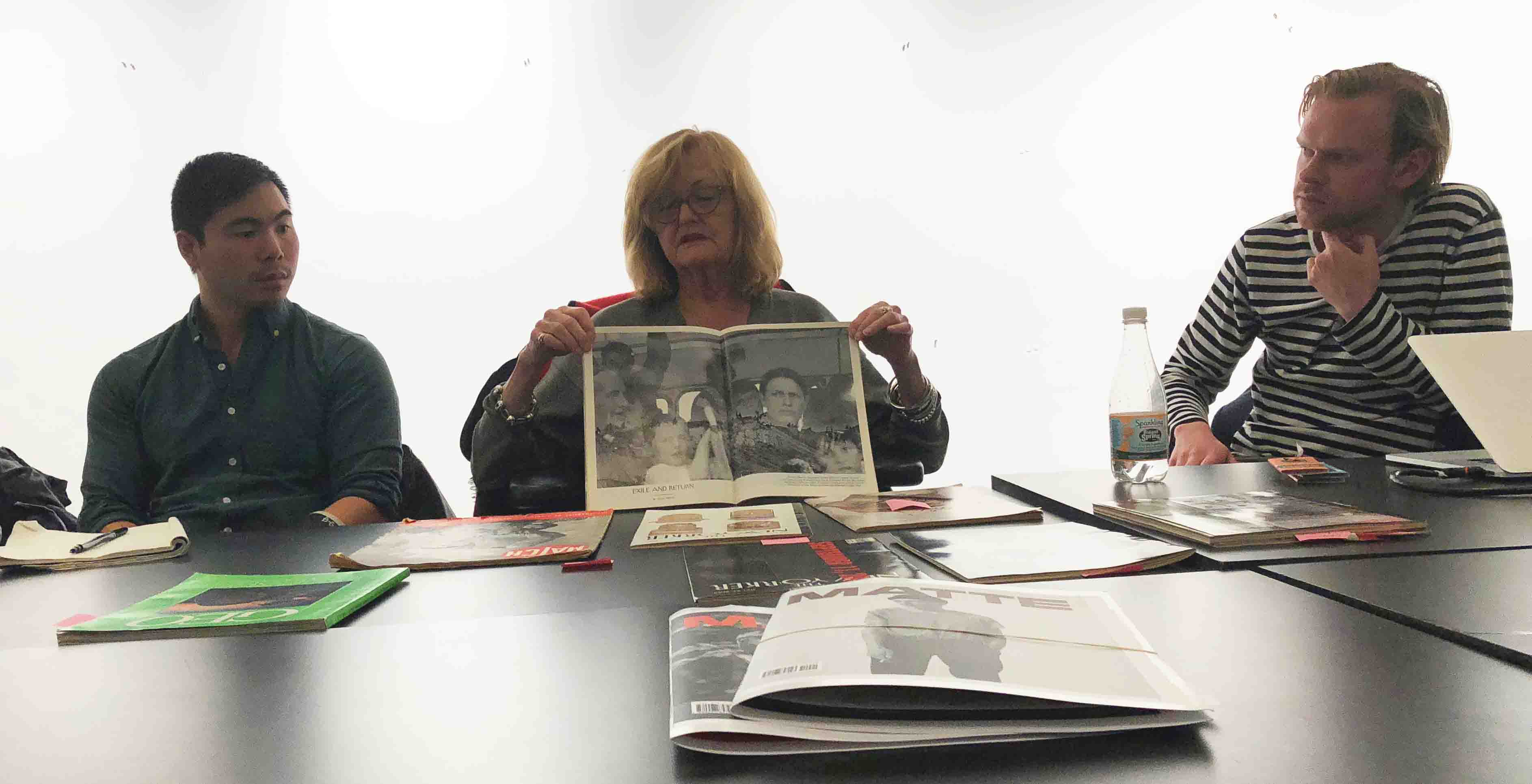
News photography editors and Poynter Fellows in Journalism Elisabeth Biondi and Siobhán Bohnacker shared their views on the evolving nature of magazine photography at a forum Monday afternoon.
The event, cosponsored by the course “How to Do Everything” and the Poynter Fellowship in Journalism, featured a discussion between the two photo editors, Matt Leifheit ART ’17, who teaches the course, and Clara Mokri ’18. During the forum, Biondi and Bohnacker spoke about the evolution of magazine photography from a primarily print format to a digital platform and offered advice to those interested in pursuing a career in photography.
“It’s not about the best photography, it’s about the photography that’s best for the magazine,” Bohnacker said to an audience of around 20 people.
Offering advice to photographers interested in submitting their work to a magazine, Bohnacker, who currently works as a senior photo editor at The New Yorker, said photographers should have a basic understanding of how their work will fit into the magazine’s image.
Before joining The New Yorker in 2013, Bohnacker worked as a photo editor at The New York Times Magazine, as well as with various nongovernmental organizations, nonprofits and advertising clients.
Biondi, who currently works as an independent curator, writer and teacher, began her 34-year career in magazine photography at Geo magazine and later joined Vanity Fair as director of photography, before returning to Germany to work as head of the photography department for the German magazine Stern. Between 1996 and 2011, Biondi worked as the visuals editor at The New Yorker.
When Biondi first joined The New Yorker, the magazine, which was established in 1925, had only recently begun including commissioned photos. As the visuals editor, Biondi said she had to learn how to balance text and photos while also choosing the correct photographer for the job. During the event, she flipped through issues of The New Yorker to show attendees various different layouts on which she worked.
Reflecting on the technological advancements that have taken place over the course of her career, Biondi said digital technology has dismantled the traditional system by which photographers share their work. Because photos can now be shared anywhere by anyone, she said, photographers must reflect carefully on “where [they] want [their] work and how to get it there.”
Both photo editors noted that the photographer should be invested in the story they hope to convey with images.
“Success for us means we’ve found someone who is a perfect fit for the story, but show us what you’re interested in,” Biondi said.
Leifheit, who created and is teaching “How to Do Everything” for the first time this year, said he organized the forum to expose his students to new ways of perceiving magazine photography. In 2010, Leifheit founded Matte Magazine, a print publication that serves as a platform for emerging photographers.
Chase Middleton ART ’19, who attended the event and is enrolled in Leifheit’s course, said the forum was a great opportunity to learn more about the process of magazine photography and “what questions to ask” — topics, she said, that are not often taught.
Attendee Kristina Kim ’18, a staff photographer at the News, said she enjoyed the opportunity to hear from established photo editors and learn about the relationship dynamic between photographers and photo editors.
The Poynter Fellowship in Journalism was founded by Nelson Poynter, who completed a Yale Master’s degree in 1927, and aims to bring those who have made significant contributions to the media to campus.
Chloe Glass | chloe.glass@yale.edu







